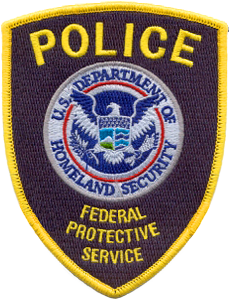 With doors still locked at federal buildings around the country, many are wondering: Who is maintaining security during the funding hiatus? For about 9,000 facilities owned or leased by the General Services Administration (GSA) or the Department of Homeland Security (DHS), the responsibility belongs to the Federal Protective Service (FPS). Part of the DHS, the FPS is the security police division of the National Protection and Programs Directorate and funded largely by fees from building tenants rather than annual appropriations. Before, during and after the shutdown, FPS employees adhere to their motto, “Secure Facilities, Safe Occupants.”
With doors still locked at federal buildings around the country, many are wondering: Who is maintaining security during the funding hiatus? For about 9,000 facilities owned or leased by the General Services Administration (GSA) or the Department of Homeland Security (DHS), the responsibility belongs to the Federal Protective Service (FPS). Part of the DHS, the FPS is the security police division of the National Protection and Programs Directorate and funded largely by fees from building tenants rather than annual appropriations. Before, during and after the shutdown, FPS employees adhere to their motto, “Secure Facilities, Safe Occupants.”
The FPS mission is “to render federal properties safe and secure for federal employees, officials and visitors in a professional and cost effective manner by deploying a highly trained and multi-disciplined police force.” About 2,100 full-time employees work at 11 regional offices, the DHS headquarters in D.C. and the FPS Academy at the Federal Law Enforcement Training Center in Glynco, Georgia. Employees are also stationed at four regional MegaCenters, facilities that monitor alarm systems, closed-circuit televisions and communications between federal facilities around the country, 24 hours a day, 7 days a week. About 15,000 private security contractors also stand guard at various properties for FPS. The service’s own law enforcement officers are organized in mobile patrols and response teams. Mobile command posts, for example, are prepared for deployment during national emergencies, while explosives detector dog teams perform preventive searches as well as responding to bomb threats and suspicious package alerts.
Six night watchmen hired by George Washington’s administration are considered the earliest forerunners of the FPS. Designated officers have long policed buildings owned and occupied by the U.S. government, and, in 1949, the United States Special Police became part of the GSA when real property functions were consolidated within the new agency. Early duties focused on safety, such as fire prevention and detection, but growing concerns over bomb threats, vandalism and protest violence led to a shift in focus by 1960. The Federal Protective Force, later known as the FPS, was established by the GSA in 1971. The vital role of FPS in protecting national infrastructure was recognized by the Homeland Security Act of 2002, which transferred FPS to DHS.
Yet a scandal erupted in early 2009, when a government sting operation breached several Level 4 security federal buildings with homemade bomb materials. A subsequent report by the Government Accountability Office (GAO) charged that the FPS was not adequately assessing and preventing security risks to government workplaces. Failings cited in the report included a backlog of building security assessments, poor oversight of low-paid contracted security guards and an inadequate framework for assessing vulnerabilities, consequences and countermeasure options for each facility. The Senate Homeland Security and Government Affairs Committee focused on the poor return from the $1.3 trillion budget of FPS. The committee’s ranking Republican, Susan Collins (R-Maine), said, “We taxpayers are simply not receiving the security we paid for and the security we expect FPS to provide.”
The FPS re-focused on its core mission, especially after the appointment of Director L. Eric Patterson in 2010. Significant improvements include adoption of the National Infrastructure Protection Plan to guide risk evaluation, as recommended by the GAO. Services viewed by the FPS as primary include:
- Conducting facility security assessments;
- Designing countermeasures for tenant agencies;
- Maintaining uniformed law enforcement presence;
- Maintaining armed contract security guards;
- Performing background suitability checks for contract employees; and
- Monitoring security alarms via centralized communication centers.
Additional priorities include working with FEMA during natural disasters, sharing intelligence among local, state and federal agencies, training federal tenants in crime prevention and emergency planning. By educating tenants to handle suspicious mail, weapons threats and emergency evacuations, the FPS seeks to maximize security and safety of federal property, federal employees and the general public that use facilities under its protection.
